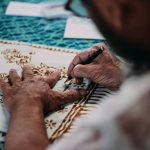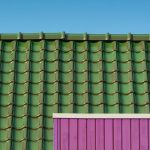When you're planning a DIY project for waterproof fabric items, it's essential to start by choosing the right materials. You'll want to consider durable options like nylon or polyester, which can withstand the elements. Once you've gathered your supplies, you can explore various waterproofing techniques that add functionality and style to your creations. From crafting bags to outdoor cushions, the possibilities are extensive. But before you jump into your first project, there are some key techniques you should know that can make all the difference in performance and durability.
Table of Contents
Key Takeaways
- Choose waterproof fabrics like nylon or polyester for durability in DIY projects, ensuring they resist water effectively.
- Apply waterproofing sprays or sealants to enhance the water resistance of fabric items you create.
- Use seam sealers on stitching areas to prevent leaks in bags, tents, or outdoor clothing.
- Consider making waterproof bags or cushions by sewing waterproof fabric and adding zippers or Velcro for easy cleaning.
Choosing the Right Fabric
When selecting fabric for your waterproof projects, consider materials specifically designed to resist water. Look for options like nylon, polyester, or vinyl, as they're known for their durability and water-resistant properties. These fabrics often have coatings or treatments that prevent water from penetrating, making them ideal for outdoor gear or accessories.
You should also think about the weight of the fabric. Lightweight options are great for projects like backpacks or tarps, while heavier fabrics work well for items like tents or rain jackets. Don't forget to check the fabric's breathability, especially if you're creating clothing. You want to balance waterproofing with comfort.
Another factor to consider is the fabric's color and pattern. Darker colors might show less dirt and wear, while bright colors can enhance visibility in outdoor settings. If you're making something that'll get a lot of use, opt for fabrics that are easy to clean and maintain.
Lastly, always check the fabric's specifications. Look for details like water column rating, which indicates how much water pressure the fabric can withstand. This'll help you choose the best fabric for your specific needs, ensuring your project lasts.
Waterproofing Techniques and Methods
After choosing the right fabric, it's important to explore various waterproofing techniques to enhance your project's durability and performance.
One effective method is applying a waterproofing spray. These sprays create a protective barrier on the fabric's surface, preventing water from penetrating. Simply clean the fabric, then spray evenly, allowing it to dry completely before use.
Another popular technique is using seam sealers. If you're sewing items, applying seam sealant along the stitching can stop water from seeping through those tiny holes. Make sure the seams are clean and dry before applying.
You could also consider using wax for natural fabrics. Rubbing a wax bar over the fabric and then using heat to melt it in creates a water-resistant layer. This method works well for items needing flexibility.
Finally, if you're feeling adventurous, you can try a DIY fabric treatment using silicone. Mixing silicone with a solvent and applying it can provide long-lasting waterproofing. Just be cautious, as this method may alter the fabric's feel.
With these techniques, you can ensure your fabric items are ready to face the elements without compromising on style or function!
DIY Waterproof Bag Tutorial
Looking for a practical way to keep your belongings dry? A DIY waterproof bag is the perfect solution! You can create one with just a few materials and steps. Start with waterproof fabric, a zipper, and some strong thread.
Here's a quick overview of the materials you'll need:
| Material | Quantity | Purpose |
|---|---|---|
| Waterproof Fabric | 1 yard | Main body of the bag |
| Zipper | 1 | To keep contents secure |
| Strong Thread | 1 spool | For stitching the bag together |
To begin, cut the fabric into two rectangular pieces. Fold the edges and sew to prevent fraying. Attach the zipper between the two pieces, ensuring it aligns perfectly. Then, sew the sides together, leaving the top open. Finally, turn the bag inside out, and voilà! You've got a stylish waterproof bag ready to protect your essentials from moisture. This versatile bag is perfect for beach trips, hiking, or everyday use. Now you can confidently stash your belongings without worrying about water damage!
Creating Outdoor Cushions
Creating outdoor cushions not only adds comfort to your patio but also enhances the overall aesthetic of your outdoor space. To get started, you'll need waterproof fabric, foam padding, and a sewing machine. Measure your seating area to determine the size of your cushions. Once you've got your measurements, cut the foam padding to fit.
Next, cut your waterproof fabric, leaving an extra inch on each side for seams. If you're using patterned fabric, consider how the design aligns when you sew the pieces together. With the fabric cut, place the foam in the center and fold the fabric over it. Sew the edges, ensuring you create a secure seal to keep moisture out.
Don't forget to add a zipper or Velcro closure, which allows for easy removal and cleaning. If you want extra durability, consider using double stitching on the seams.
Once your cushions are complete, arrange them on your patio furniture and enjoy your new outdoor oasis. With a little effort, you'll have stylish and waterproof cushions that withstand the elements while providing a cozy spot to relax.
Waterproofing Clothing Essentials
Waterproofing your clothing items can keep you dry and comfortable during unexpected rainstorms, just like outdoor cushions protect your patio from moisture.
Whether you're hiking, cycling, or just running errands, having waterproof clothing is essential. Thankfully, you can easily enhance your wardrobe with a few DIY techniques.
Here are some popular methods to waterproof your clothing:
- Waterproof Spray: Use a fabric-safe waterproof spray to create a barrier against water on jackets and shoes.
- Waxing: For canvas or cotton items, applying wax can provide a durable waterproof layer.
- Seam Sealing: Use seam tape or sealant to cover stitching on jackets and pants, preventing leaks.
Frequently Asked Questions
Can I Waterproof Fabric After It's Already Been Sewn?
Yes, you can waterproof fabric after it's been sewn. Apply a waterproofing spray or treatment evenly, ensuring full coverage. Allow it to dry completely for best results, and your fabric will be better protected against moisture.
What Tools Are Essential for Waterproofing Fabric Projects?
For waterproofing fabric projects, you'll need essential tools like a spray applicator, waterproofing solution, brushes, and a heat source. These tools help you effectively apply the treatment and ensure lasting protection against water damage.
How Do I Clean Waterproof Fabric Items Without Damaging Them?
To clean waterproof fabric items, gently wipe them with a damp cloth and mild soap. Avoid harsh chemicals and machine washing; instead, air-dry them to maintain their protective qualities and prevent damage.
Are There Eco-Friendly Waterproofing Options Available?
Yes, there are eco-friendly waterproofing options available. You can use products like beeswax, natural oils, or plant-based waterproofing sprays. These alternatives effectively protect your items while being gentle on the environment and safe for you.
How Long Does Waterproofing Last Before Needing Reapplication?
Waterproofing typically lasts anywhere from a few months to a couple of years, depending on the product and usage. You should check for wear regularly and reapply when you notice reduced effectiveness.
- A Guide to China’s Flourishing Velvet Fabric Trade - June 20, 2025
- Sourcing Specialized Fabrics: A Look at China’s Non-Woven Sector - June 20, 2025
- Exploring the Quality of Cotton Fabric From Chinese Manufacturers - June 20, 2025





